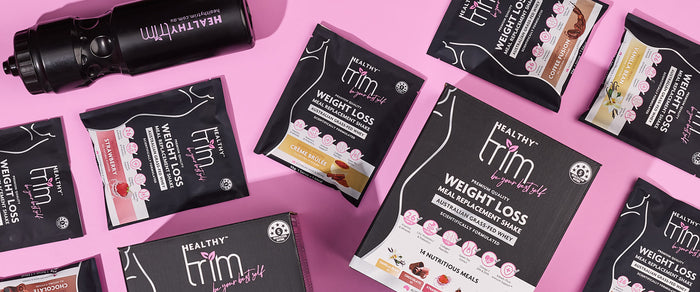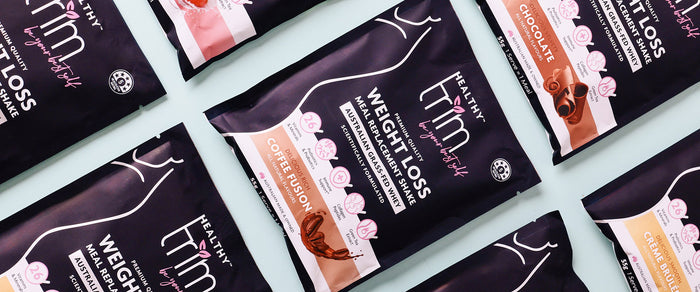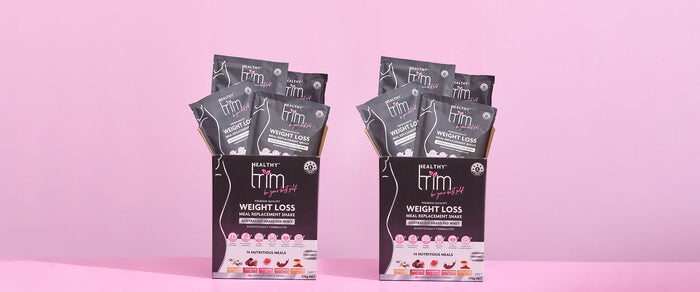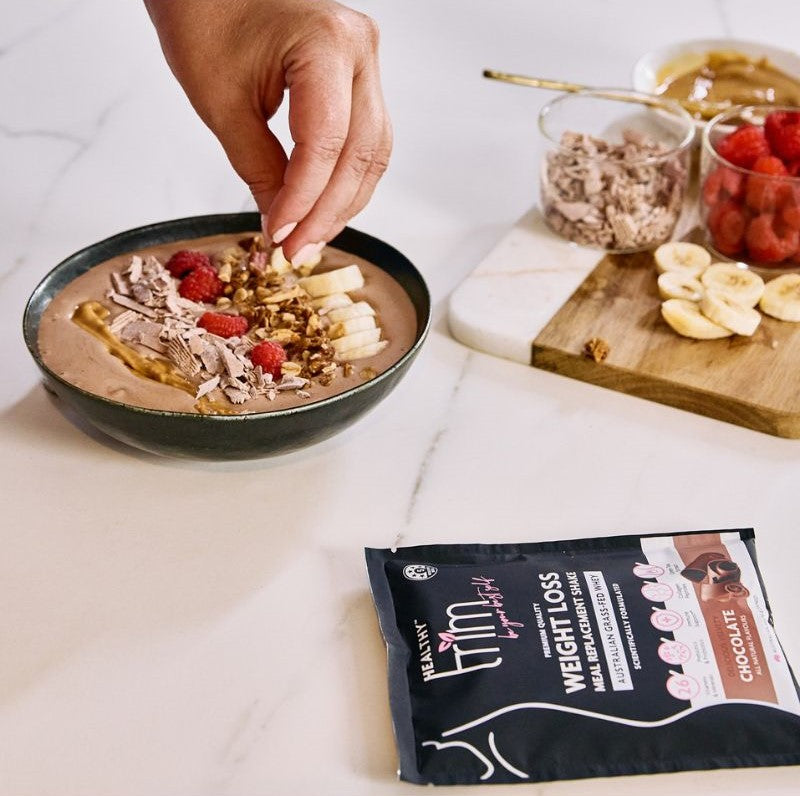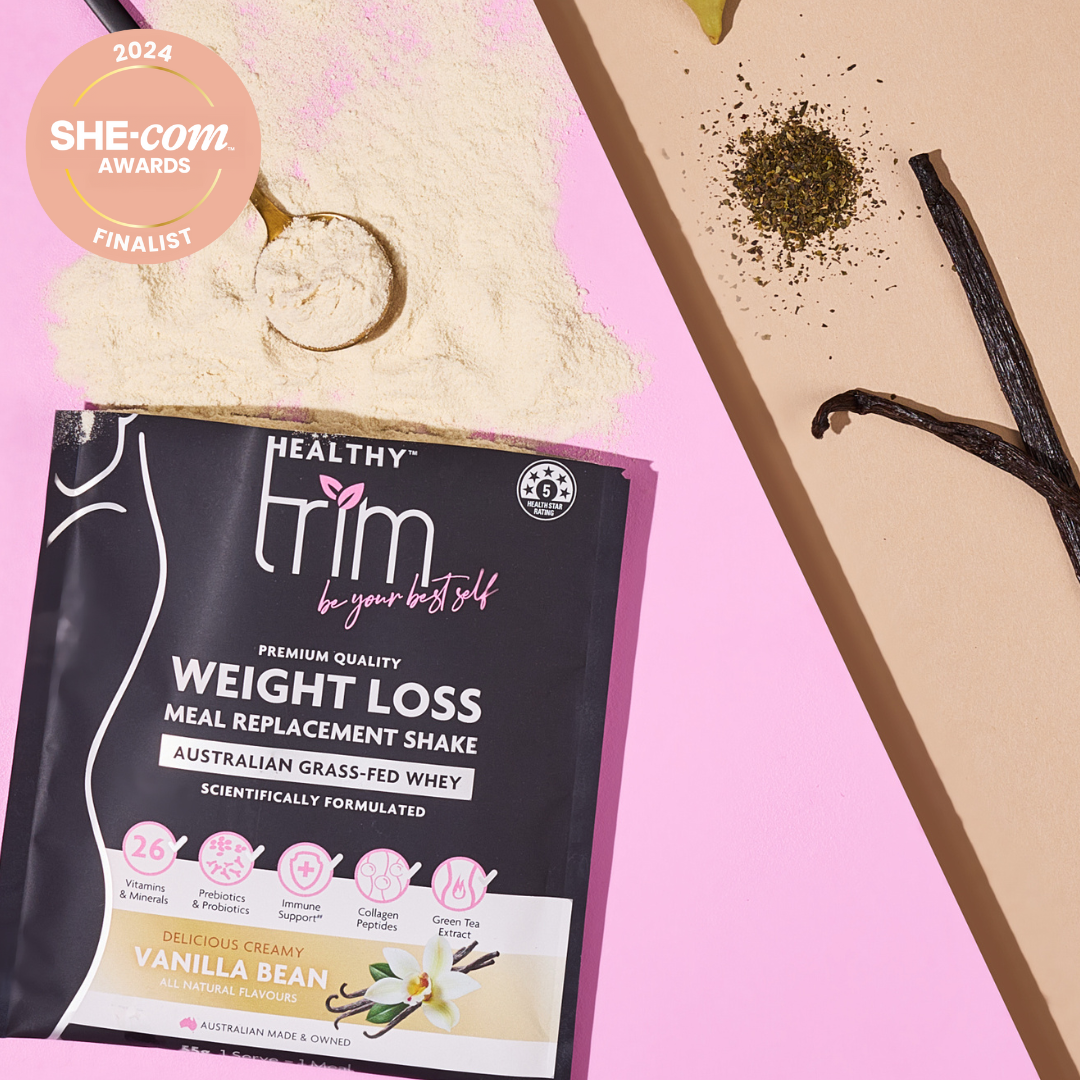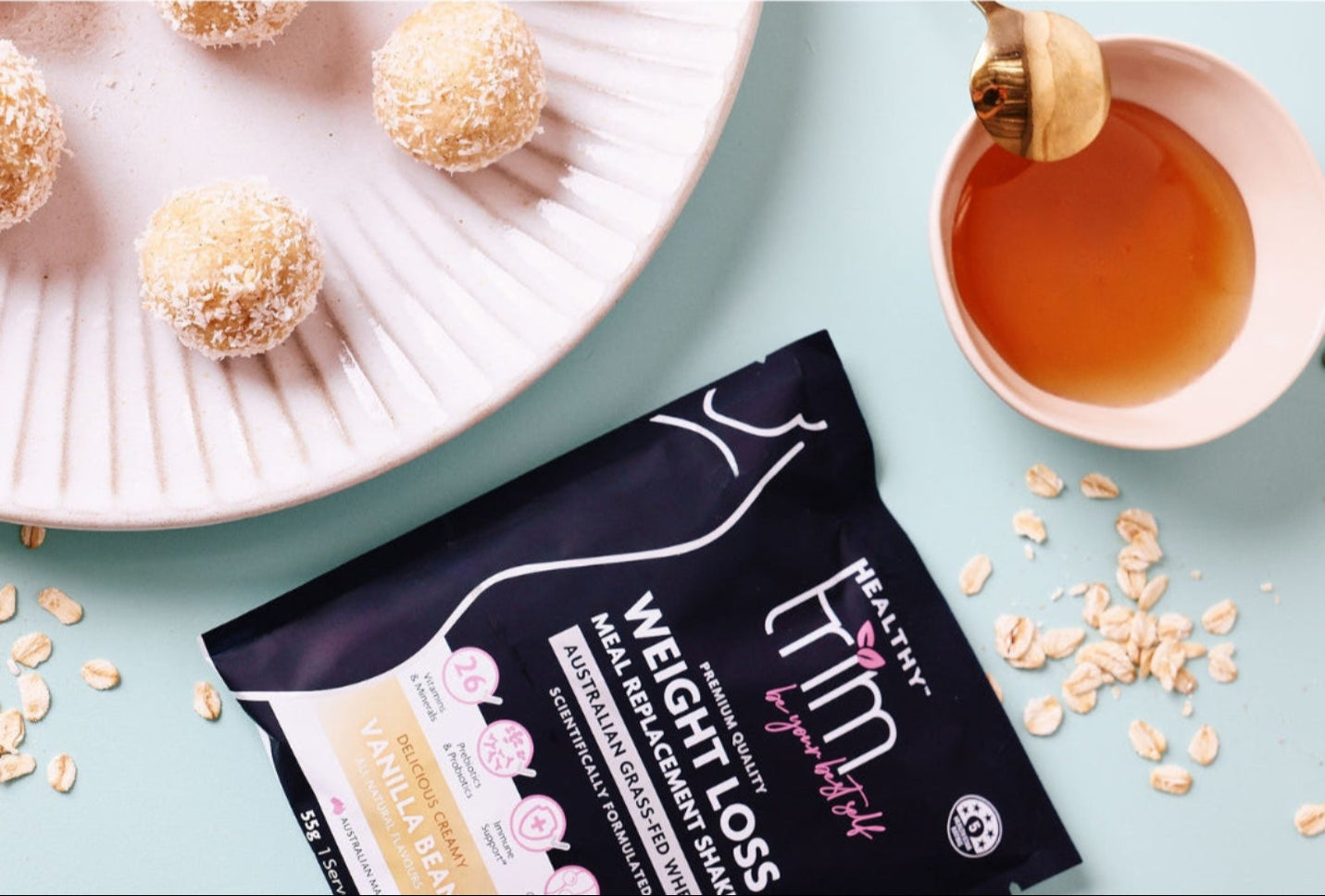· By Healthy Trim
Diet Shakes & Slimming Shakes in Australia
If you are looking to decrease your weight and traditional dieting isn't getting you anywhere, you might opt for healthy diet shakes as a meal replacement option. However, not all shakes are made equal.
In this blog, we will discuss the difference between diet shakes and slimming shakes to help you choose the right option for you.
What are Diet Shakes and Slimming Shakes?
If you are new to nutritional shakes, you may believe that diet shakes and slimming shakes are the same thing and the terms can be used interchangeably. However, this is far from true - each describes a very different product.
Diet Shakes
Diet shakes are also known as meal replacement shakes. They are specially formulated to be a nutritionally balanced, low-calorie substitute for a meal. They contain all the protein, vitamins and minerals needed by the body.
Slimming Shakes
Slimming shakes are not a distinct category. This label can be used to describe a healthier low-calorie milkshake or a high-calorie treat. They may be homemade and include fruit, seeds and protein powder.
Diet Shake Vs Slimming Shakes: What's The Difference?
Diet Shakes (Meal Replacement Shakes)
Diet shakes are designed to be nutritionally complete, containing protein, fats, and fibre that are appropriately balanced. They also contain vitamins and minerals to boost the health of the user. They are calorie controlled to support weight loss by acting as a meal substitute.
On average, diet shakes contain 200-400 calories per serving.
Some come ready to drink whereas others come in powder form for mixing with water or your choice of milk.
Slimming Shakes
This umbrella term covers both premade and homemade shakes. Typically, they are a lower calorie alternative to high-sugar options. These may be used for weight management but do not work as a full meal replacement beverage.
Often the ingredients of slimming shakes vary. They may use healthy ingredients like protein powders, fruit or seeds. Some may even be high in sugar or calories depending on the recipe.
Some examples of a slimming shake could be a homemade chocolate and avocado shake or a green tea shake made with low-fat milk or a dairy alternative.
How to Choose the Right Diet Shake for Your Lifestyle
Not all milkshakes are made equal. If you are looking for the best shake for losing weight, it is important to choose one with good nutritional value.
If you want a meal replacement product that will allow you to skip a meal, diet shakes are nutritionally complete.
If you are looking for a low-calorie shake as a snack or drink, opt for a slimming shake.
When deciding on the best option for you, consider:
- Your Goal: Do you want to lose weight, maintain your weight, or boost sport or performance?
- Dietary Needs: Do you need your shake to be vegan, lactose-free, gluten-free, high-protein, or low-carb?
- Lifestyle: Do you need a complete meal replacement, or a light, calorie-controlled shake?
Ingredients to Look for in a Healthy Australian Shake
If you are looking for a meal replacement shake, it is important that it contains everything you need. Some things you should look for are:
- Protein per Serving: Aim for 15–30g.
- Calories: This should range between 200–500 kcal depending on whether it's a light meal or full meal.
- Fibre: 3–8g to help you feel full.
- Fat: Look for healthy fats (from nuts and seeds). Do not opt for trans fats.
- Micronutrients: Comprehensive vitamin and mineral coverage is key.
- Watch for added sugar including sugar alcohols.
- Whole-food protein sources such as milk, pea and whey are superior.
- A recognisable and simple ingredients list.
Top Australian Brands and How They Compare
There are a large number of diet shakes for weight loss brands. Here are some of the best weight loss shakes Australia has to offer:
Healthy Trim
Calories per serving: 204 - 205 kcal.
Protein: 31.5g+.
Carbs and Fibre: Balanced + fibre.
Unique Selling Point: Crafted to support gut-brain health for overall wellbeing. Scientifically formulated to deliver the highest protein-to-calorie ratio in its class — supporting optimal gut-brain health, sustained energy, and complete nutritional balance.
Target Audience: Health-driven individuals who want smarter nutrition — from professionals managing busy schedules to fitness enthusiasts and anyone seeking long-term wellbeing without compromise.
Vybey
Calories per Serving: ~400 kcal.
Protein: 30g+.
Carbs and Fibre: Balanced + fibre.
Unique Selling Point: Braincare nootropics, plant-based.
Target Audience: Professionals, students, fitness.
Aussielent
Calories per serving: ~400 kcal.
Protein: 27g.
Carbs and Fibre: Balanced + fibre.
Unique Selling Point: Affordable, simple nutrition.
Target Audience: Budget-conscious users.
The Man Shake
Calories per Serving: ~200 kcal.
Protein: ~30g.
Carbs and Fibre: Low carb, high fibre.
Unique Selling Point: Tailored for men, weight loss focus.
Target Audience: Men wanting weight loss.
The Lady Shake
Calories per Serving: ~200 kcal.
Protein: ~25g.
Carbs and Fibre: Low carb, moderate fibre.
Unique Selling Point: Tailored for women's weight loss.
Target Audience: Women seeking weight loss.
Macro Mike
Calories per Serving: ~250-300 kcal.
Protein: 20-25g.
Carbs and Fibre: Moderate carbs, natural.
Unique Selling Point: Vegan, gut-friendly, flavour variety.
Target Audience: Plant-based consumers.
How to Incorporate Shakes Into a Healthy Lifestyle
Many people opt for diet shakes for weight loss as they provide a nutritious and calorie-controlled alternative to a full meal. For meal replacement shakes to work effectively, you need to integrate them fully into your routine.
To do this you should:
- Replace one or two meals per day: Replacing two meals is best for weight loss while replacing one meal a day will help you maintain your weight. To start with, replace a single meal, breakfast or lunch, to see how your body responds.
- Stay Hydrated: Be sure to drink lots of water alongside your shake. Protein and fibre need hydration to help you feel full and maintain digestive health.
- Choose whole foods when you are creating meals to help maintain satiety.
- Be sure to check your overall calorie intake so you can monitor progress when it comes to weight loss.
- Select shakes with low sugar content and high protein.
